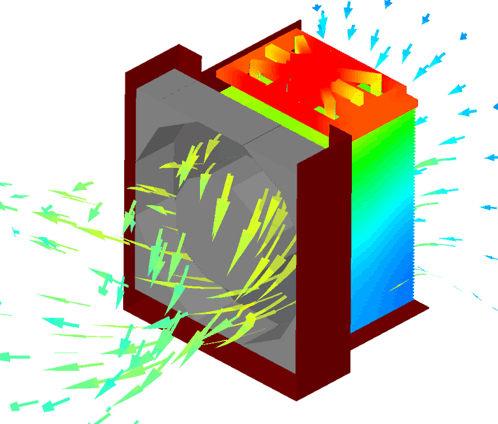Heat Transfer: The CPU generates heat during its operation. This heat is transferred to the heat sink, which is in direct contact with the CPU. The heat sink absorbs the heat from the CPU.
Airflow: The heat sink is designed with fins or ridges that increase its surface area. When air flows over these fins, it carries away the heat from the heat sink. This airflow can be generated by natural convection (the natural movement of air due to temperature differences) or forced convection (using fans or other cooling mechanisms).

Heat Dissipation: As the air flows over the heat sink, it absorbs the heat and becomes warmer. The warm air rises due to its lower density, creating a natural upward flow. This upward flow of warm air helps to remove the heat from the immediate vicinity of the CPU.
Replacement of Hot Air: As the warm air rises, cooler air from the surroundings replaces it. This continuous circulation of air helps to maintain a cooler temperature around the CPU.
Cooling Efficiency: The efficiency of convection cooling depends on factors such as the design of the heat sink, the airflow rate, and the temperature difference between the CPU and the surrounding air. Increasing the surface area of the heat sink, improving airflow, and ensuring proper ventilation in the computer case can enhance the cooling efficiency.
It's important to note that in some cases, a heat sink may also have a fan attached to further enhance the convection cooling process. This combination of a heat sink and fan is commonly referred to as a CPU cooler.


 +86-18902844286
+86-18902844286
 E-mail
E-mail
